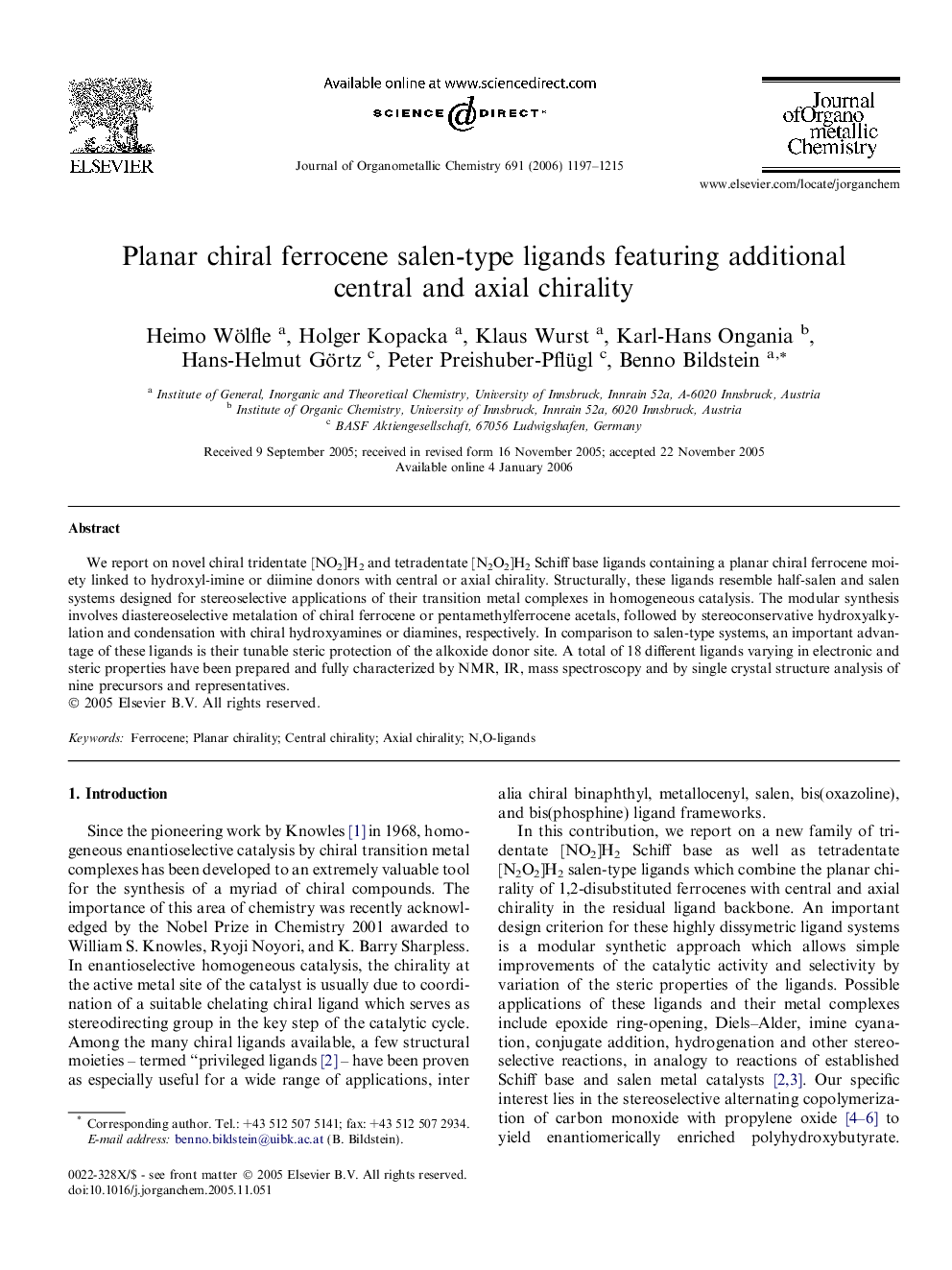| Article ID | Journal | Published Year | Pages | File Type |
|---|---|---|---|---|
| 1328597 | Journal of Organometallic Chemistry | 2006 | 19 Pages |
We report on novel chiral tridentate [NO2]H2 and tetradentate [N2O2]H2 Schiff base ligands containing a planar chiral ferrocene moiety linked to hydroxyl-imine or diimine donors with central or axial chirality. Structurally, these ligands resemble half-salen and salen systems designed for stereoselective applications of their transition metal complexes in homogeneous catalysis. The modular synthesis involves diastereoselective metalation of chiral ferrocene or pentamethylferrocene acetals, followed by stereoconservative hydroxyalkylation and condensation with chiral hydroxyamines or diamines, respectively. In comparison to salen-type systems, an important advantage of these ligands is their tunable steric protection of the alkoxide donor site. A total of 18 different ligands varying in electronic and steric properties have been prepared and fully characterized by NMR, IR, mass spectroscopy and by single crystal structure analysis of nine precursors and representatives.
Graphical abstractNovel highly chiral tridentate [NO2]H2 and tetradentate [N2O2]H2 Schiff base ligands with planar, central and axial chirality have been developed. Structurally, these ligands resemble half-salen and salen systems designed for stereoselective applications of their transition metal complexes in homogeneous catalysis. The modular synthesis involves diastereoselective metalation of chiral ferrocene acetals, followed by stereoconservative hydroxyalkylation and condensation with chiral hydroxyamines or diamines, respectively. In comparison to salen-type systems, an important advantage of these ligands is their tunable steric protection of the alkoxide donor site.Figure optionsDownload full-size imageDownload as PowerPoint slide
